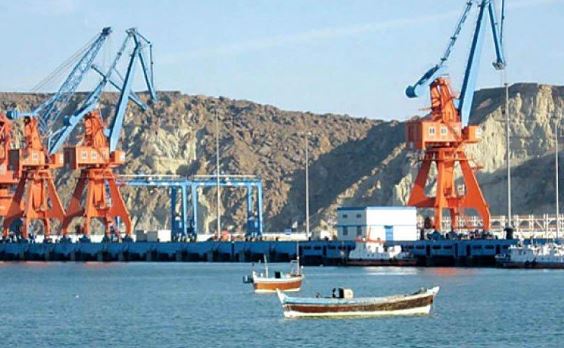Islamabad, Aug 27 (DNA): Gwadar is undergoing repaid transformation phase under China-led developments, says a report published by Gwadar Pro on Saturday.
Compared with the past, Gwadar is passing through a promising and positive change in terms of its outlook and public life. It is still in the phase of transformation with flying colors.
According to the reports, the people of Gwadar are witnessing the change in their living standards, livelihood, business, and socio-economic dynamics. Credit goes to China-led developments indeed.
It is a matter of fact that Gwadar has been transformed from a small fishing town to a commercial and tourist hub. Undoubtedly, development is a progressive and time-taking process, and to say that Gwadar is set to be the commercial torchbearer for Pakistan would not be an overstatement.
The infrastructural transmutation over the period was largely initiated during the early period of the port’s construction and later compounded by China-Pakistan Economic Corridor.
The period from 2015 was particularly a watershed moment for Gwadar, thanks to the Belt and Road Initiative. Apart from the operationalization of the port, China has undertaken a number of initiatives in Gwadar.
East Bay Expressway (EBEW), New Gwadar International Airport (NGIA), China-Pakistan Vocational and Technical Training Institute (PCVTI), China-Pakistan 300 Bed Friendship Hospital, 1.2 million Gallons per Day (MGD) desalination water plant, and a number of other infrastructural development projects are some of the China-funded schemes.
Many of these projects such as EBEW and PCVTI are functional. Others are expected to be completed soon.
Since China’s takeover of Gwadar port in 2013, a number of direct and indirect benefits have been offered to the local community. Several job opportunities have been provided. With the ongoing process of industrialization, especially in Gwadar Free Zone, thousands of additional jobs will be created. Moreover, indirectly, Gwadar has been benefitted considerably.
The real estate and construction sectors in the city have been boosted. The tourism sector has gained traction, thanks to the unpremeditated marketing due to CPEC. In addition to the infrastructure developments, Gwadar is witnessing multiple social welfare programs, such as Gwadar Women’s Development Centre, aimed at skills development, women empowerment, and poverty alleviation.
Furthermore, the planned projects can eventually make the locals self-sufficient. Moreover, China has so far installed over 7,000 solar panels in district Gwadar to provide efficient electricity to local users.
Gwadar port is functional with a remarkable capacity to process containers, bulk cargo, and LPG vessels. Hundreds of thousands of cargo is processed annually. Recently, a web-based custom (weboc) service has been instituted as well, which will accelerate the clearance process. In Gwadar Free Zone, more than 50 companies, both from Pakistan and abroad, have been registered and are in the operational stage.
The areas of manufacturing/ processing range from agriculture to trading, food processing, chemical fertilizer, metal processing and agricultural production.
The Scientific Research Laboratory in Free Zone equipped with sophisticated technology is working selflessly on modern techniques to explore new varieties of plants favorable to Gwadar’s environment. So far, they have cultivated several varieties of bananas.
Cultivation of other plants such as figs and king-grass which are seemingly unfeasible has made it possible for the local farmers to prospect new avenues of livelihood.
Apart from managing commercial activities, China Overseas Ports Holding Company (COPHC), the concession-holder and operator of Gwadar Port and Free Zone, has undertaken a number of initiatives in the social sector, within the port premises and beyond.
The China-Pakistan High School for girls in Faqeer Colony, which is governed by COPHC, has proved to be a great achievement in the education sector.
The Women Garments Factory and the goat farm in the Free Zone, in addition to skills enhancement, are a source of livelihood for the local workers.
Besides, Chinese enterprises working in Gwadar, under the framework of CSR, extend a helping hand to their local brothers. During the floods earlier this year, COPHC reached the families on the outskirts of Gwadar. Edible items to 1000 affected families were distributed.
Fishing nets were given to the local fishermen. Apart from social services, China has also striven to enhance the institutional efficiency of Gwadar. Motorcycles and laptops have been given to Gwadar Police to increase their productivity.
For the pursuit of clean and green Gwadar, China-Pakistan Friendship Forest was established where more than 50,000 plants have been planted. This has improved the natural environment of Gwadar.
This is not the end. Gwadar is yet to achieve its full potential. With the construction of the breakwater, completion of the port’s dredging process and operationalization of the international airport, Gwadar port will truly prove to be the engine of Pakistan’s economic development.
The industrialization of the Gwadar Free Zone will start a new era for Pakistan’s progress. With the commencement of manufacturing in the free zone, Pakistan will emerge as a production hub in South Asia. Exports will increase, curtailing Pakistan’s current account deficit and increasing the foreign reserves.
















